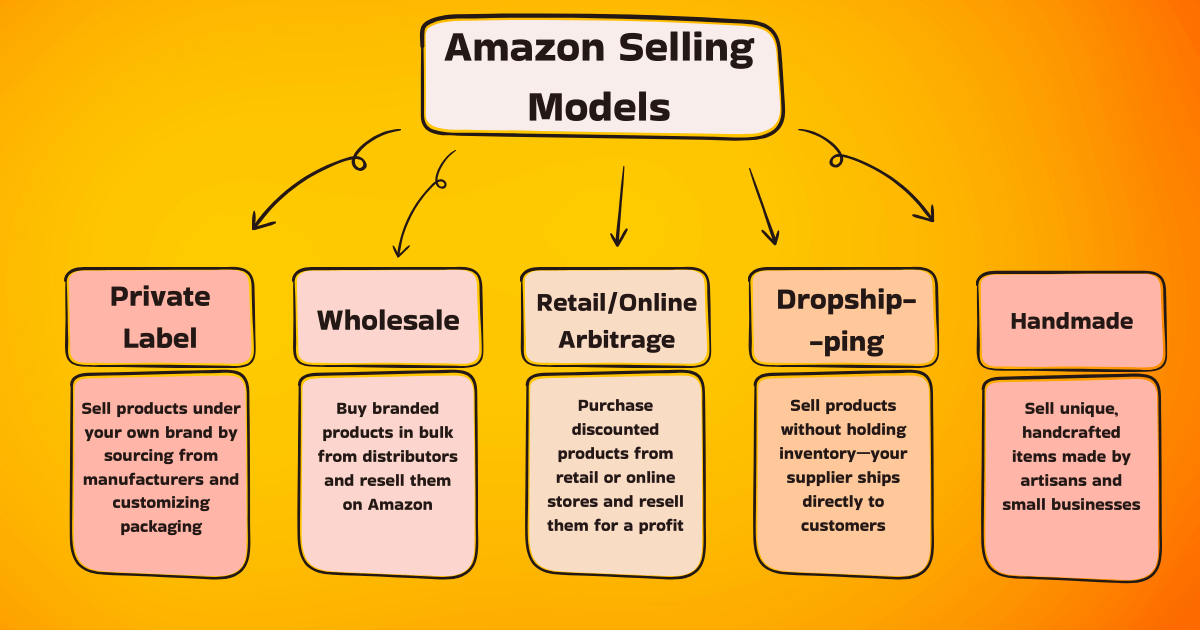Introduction
Selling on Amazon is one of the most profitable online business models, but success hinges on choosing the right products. Without proper Amazon product research, sellers risk investing in low-demand or overly competitive items. This guide walks you through the process of identifying winning products on Amazon, ensuring profitability and long-term growth.
Understanding Amazon’s Marketplace
Amazon offers different selling models, including:
- Private Label: Creating your own branded products
- Wholesale: Buying in bulk and reselling
Retail/Online Arbitrage: Purchasing discounted products and reselling for a profit

- Dropshipping: Selling without holding inventory
- Handmade: Selling handmade or custom items
Understanding how Amazon ranks products is crucial. The A9 algorithm prioritizes listings based on relevance, sales velocity, and customer satisfaction. Knowing this helps optimize your product research strategy.
Key Criteria for a Winning Product
A successful Amazon product meets the following criteria:
- High Demand, Low Competition: Products should have consistent search volume with fewer competing sellers.
- Healthy Profit Margins: Aim for at least 30-50% profit after deducting Amazon fees, shipping, and marketing costs.
- Lightweight & Small Size: Reduces shipping and fulfillment costs, improving profitability.
- Non-Seasonal & Evergreen Demand: Products that sell year-round ensure consistent income.
- Low Return Rates & Simple Manufacturing: Complicated products can lead to higher defect rates and customer complaints.
Best Amazon Product Research Tools
Using the right Amazon Product Research Tool can streamline your research process. Some of the most effective tools include:
- Jungle Scout: Provides product trends, competition analysis, and estimated sales data.
- Helium 10: A comprehensive suite with keyword tracking, profitability analysis, and competitor insights.
- AMZScout: Helps identify profitable niches and track historical sales data.
- Viral Launch: Offers deep competitor research and product discovery features.
- Keepa & CamelCamelCamel: Track price history and sales fluctuations over time.
How to Find Profitable Product Ideas
Discovering profitable products requires a strategic approach. Here’s how:
- Analyze Amazon Best Sellers & Movers & Shakers: These lists reveal trending products with strong sales momentum.
- Check Competitor Listings: Identify weaknesses in existing products and create a superior alternative.
- Explore Social Media Trends: Platforms like TikTok, Instagram, and Pinterest highlight emerging product ideas.
- Use Google Trends: This tool shows seasonal interest in various products over time.
- Look for Customer Pain Points: Read reviews to find common complaints and improve on existing offerings.
Validating Product Ideas
Before investing, validate your Amazon product research ideas using these steps:
- Check Sales Volume: Use Amazon product research tools like Helium 10 or Jungle Scout to estimate sales potential.
- Analyze Customer Reviews: Look for common issues and determine if your product can address them.
- Assess Supplier Feasibility: Ensure you can source the product at a competitive cost while maintaining quality.
Sourcing & Supplier Strategies
Finding reliable suppliers is key to maintaining product quality and profit margins. Here’s how to do it:
- Use Alibaba, Global Sources, or ThomasNet: These platforms connect you with manufacturers.
- Negotiate for Better Pricing: Order samples and compare multiple suppliers before committing.
- Consider Private Labeling: Branding your product enhances credibility and increases profitability.
Avoiding Common Amazon Product Research Mistakes
Many sellers fail due to avoidable mistakes, such as:
- Ignoring Amazon’s Restrictions: Some products are restricted or require special approval.
- Overlooking Patents & Trademarks: Selling patented products can lead to legal issues.
- Underestimating Production & Shipping Costs: Ensure you calculate all costs before finalizing a product.
Failing to Differentiate Your Product: Competing with identical products leads to price wars.
Conclusion & Next Steps
Successful Amazon product research requires thorough analysis, validation, and differentiation. You can identify winning products and build a profitable Amazon business by leveraging the right Amazon product research tools and strategies.
If you’re wondering who will manage your Amazon account after listing products and completing the setup, handling listings, optimization, and sales growth can be overwhelming. That’s why I recommend connecting with Xsellrate—expert professionals who have successfully scaled small businesses to millions in sales. Let them help you achieve your desired growth effortlessly.
Now that you have a roadmap, take action—start researching, validate your ideas, and move towards launching your next successful product!

